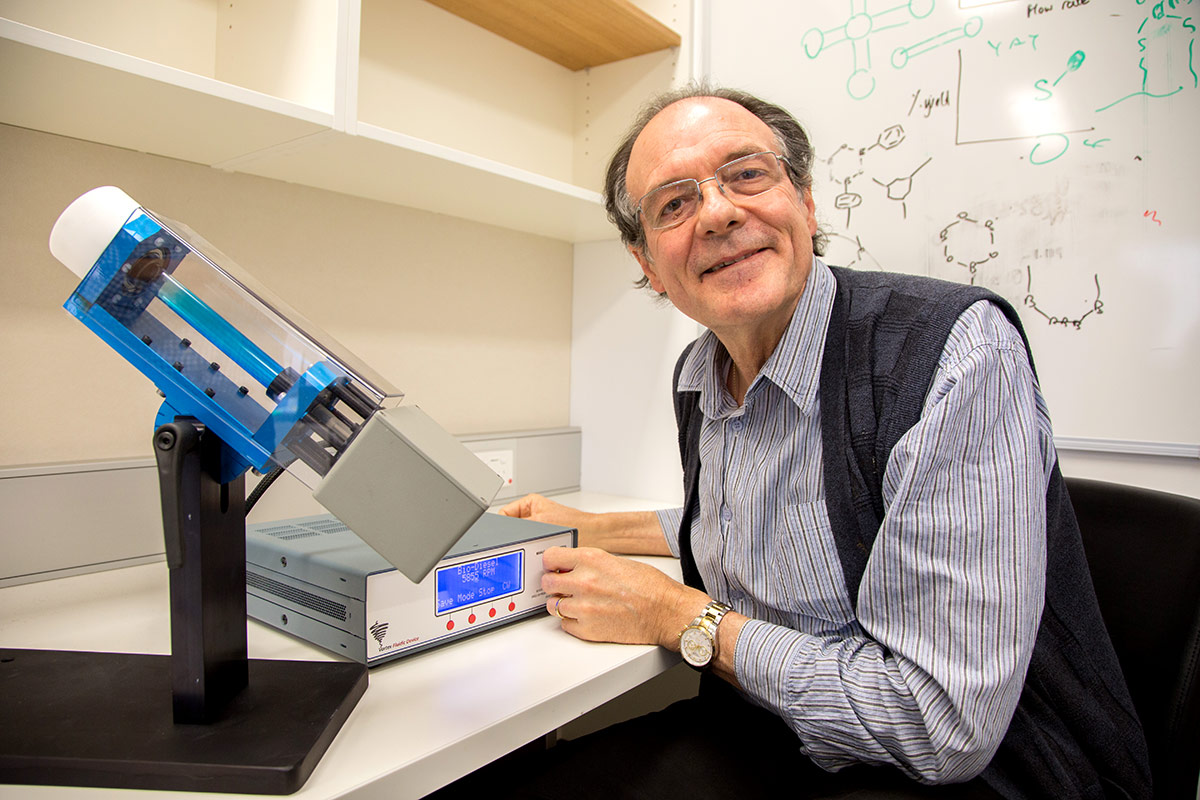
Commercial manufacturing of one of the world’s strongest materials has taken a decisive step forward with SA-based nano-science company 2D Fluidics filing another PCT Patent application on thin-film processing of high quality graphene oxide and other novel nanomaterials.
This represents an important milestone in the commercialisation of the Vortex Fluidic Device (VFD), invented by Professor Colin Raston from the Flinders Institute for NanoScale Science and Technology. The VFD produces nanomaterials in an environmentally friendly way from high-grade graphite at a price and scale viable for use in energy storage devices, coatings, polymers and other modern materials.
In an Australian first, 2D Fluidics Pty Ltd – jointly owned by ASX-listed First Graphene Ltd and Flinders University – has filed a PCT patent application for Devices and Methods for Thin-Film Chemical Processing, which covers routes to the manufacturing of graphene oxide directly from graphite raw materials, and more.
This process has the advantage of manufacturing high quality graphene oxide without the use of high-volume corrosive reagents and associated waste streams used in the incumbent, Hummers method. Graphene oxide consists of oxidised graphene layers and has valuable uses in water filtration, energy storage and electronics, to name only a few applications.
Professor Colin Raston, Professor in Clean Technology at Flinders University, is delighted by this decisive application of his Vortex Fluidic Device.
“The ability to manufacture graphene oxide in a benign way has been a major challenge, and it is now a reality with the completion of an extensive programme of research,” says Professor Raston. “We are continuing to understand the fundamental science in the VFD, and we look forward to further improvements on the processing technology for graphene oxide, and a range of other nano-carbon and related materials.”
Frist Graphene Ltd Managing Director, Craig McGuckin, says: “This is an important milestone in the commercialisation of these unique processing tools. We are particularly excited about the opportunity to cost-effectively manufacture graphene oxide products to add to our portfolio.”
First Graphene Ltd has been working with Professor Raston, Dr Kasturi Vimalanathan and others in the research team at Flinders University for more than 12 months.
The creation of 2D Fluidics builds on the reputation of the Flinders Institute for NanoScale Science and Technology. The Institute’s Director, Professor David Lewis, says the decision to recently form an Institute underlines Flinders’ strong cohort of more than 120 high performing researchers in this field, strong external partnerships and increasing international reputation.
About Graphene
Graphene, a two-dimensional carbon allotrope, is as versatile a material as any discovered on Earth. Its amazing properties as the lightest and strongest material, compared with its outstanding ability to conduct heat and electricity, means it can be integrated into a huge number of applications. It can improve the performance and efficiency of current materials and substances, but will also be developed with other two-dimensional crystals to create new compounds suited to an even wider range of applications.
In the field of energy storage, scientists are currently working on enhancing the capabilities of lithium ion batteries by incorporating graphene as an anode. This will offer much higher storage capacities with better longevity and charge rate. Graphene is also being applied in new types of supercapacitors which can be charged very quickly, yet also able to store a large amount of electricity.

